Exploring Hygge: The Essence of Cozy Living
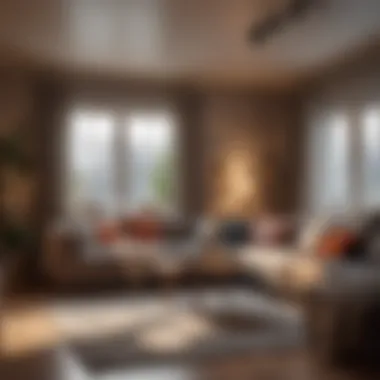
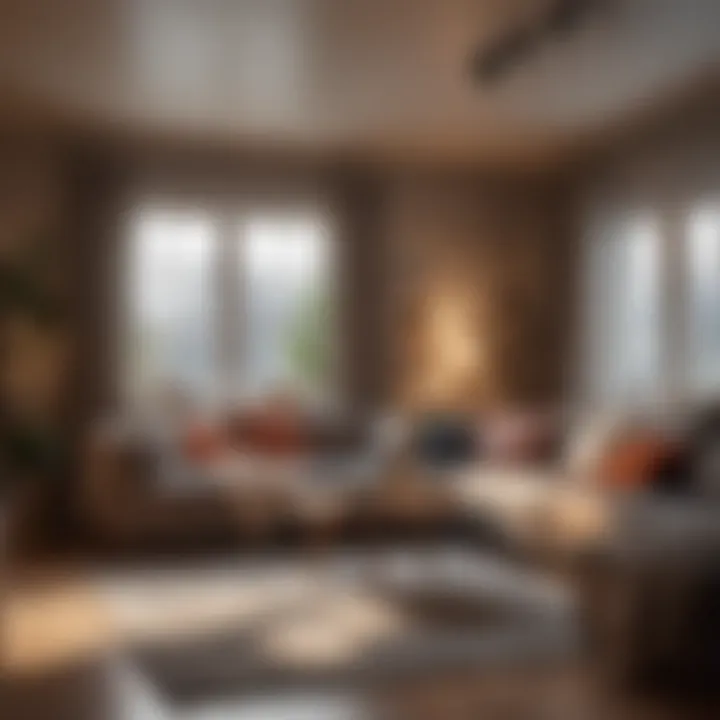
Intro
Hygge is more than just a word; it’s a way of life that prioritizes comfort and warmth. Rooted deeply in Danish culture, this concept fosters a sense of belonging and contentment. But what truly sets hygge apart? It transcends mere aesthetics, weaving together the emotional fabric of everyday living. Whether curled up with a book or enjoying a warm drink with friends, understanding hygge can transform the way we experience our spaces and interactions.
To grasp this philosophy fully, we must explore the essence of hygge—its origins, its significant role in Danish tradition, and how its principles can be integrated into modern life. As we delve into the cozy nuances, we’ll uncover practical tips ranging from home decor to lifestyle choices. Hygge encourages not only a cozy environment but also a welcoming community, making it a topic worth diving into.
Home Features
Architectural Marvels
One of the most striking aspects of Danish design is the emphasis on architecture that harmonizes with nature. Homes often feature large windows, allowing natural light to cascade into living spaces. This is crucial for creating a feeling of spaciousness and tranquility. Unlike the chaotic boxiness of urban structures, these residences exude warmth and charm, inspiring a cozy atmosphere that resonates with the principles of hygge.
Furthermore, traditional Danish homes often include elements like wooden beams and simple geometrical lines, lending an inviting yet structured feel. Picture a quaint cottage with a thatched roof and lush gardens; such designs highlight a connection to the environment while retaining a sense of intimacy, allowing individuals to retreat from the bustle of life and embrace peaceful solitude.
Unique Design Elements
The beauty of hygge also resides in small design details that enhance coziness. Here are a few elements that can elevate your living space:
- Textured Fabrics: Incorporate cushions, throws, and wool blankets. Soft materials invite touch and are perfect for chilly evenings.
- Warm Lighting: Opt for soft, warm light bulbs and have multiple light sources. Candles are particularly valued in hygge, creating a calming environment.
- Personal Touches: Add family photos or handmade crafts. These sentimental items make a house feel like a home.
"Hygge is about creating a warm atmosphere and enjoying the good things in life with good people."
Interior Design Inspirations
Color Palettes and Themes
When choosing colors for a hygge-inspired space, think softness and warmth. Earthy tones, muted shades, and gentle pastels can create a serene backdrop. Here are popular color palettes to consider:
- Neutral Tones: Whites, beiges, and greys offer an airy sense of comfort.
- Warm Earthy Hues: Rich browns, gentle greens, and terracotta can stimulate a cozy vibe.
- Textured Accents: Incorporating deep colors, like navy or forest green, through accessories can add depth without overwhelming the senses.
Furniture Arrangement Tips
Arranging furniture in a way that promotes social interaction is fundamental to hygge. Aim for intimacy with a circular or semi-circular layout to encourage conversation. Here are a few tips to keep in mind:
- Group Seating: Use sofas and armchairs in a configuration that fosters dialogue.
- Intimate Lighting: Place lamps or candles close to seating areas to create inviting pockets of light.
- Cozy Corners: Designate small spaces for relaxation with comfy chairs and a side table for books and beverages.
If designed thoughtfully, these features can cultivate a living space that embraces the heart of hygge—a true sanctuary encouraging warmth, joy, and community in everyday life.
Defining Hygge
To grasp the essence of hygge, one must appreciate not just its definition but the feelings it conjures. This Danish concept revolves around comfort, warmth, and a general sense of well-being that can be cultivated in both personal spaces and social interactions. As it emphasizes mindful living, hygge encourages individuals to savor simple pleasures and can transform mundane moments into cherished experiences. Understanding hygge's core values can have far-reaching implications on mental health and overall satisfaction in life, especially in our fast-paced modern world.
The Origins of the Term
The term "hygge" traces its roots to the Danish language, but its beginnings may be found in the Norwegian word "hugga," which means to comfort or console. Initially, it described the feeling of being safe and secure, embodying a form of coziness that takes many shapes. Over the years, hygge has evolved beyond mere vocabulary into a lifestyle choice, permeating Danish culture with deep meaning. One might imagine a chilly night, a warm drink steaming in hand, a cozy blanket wrapped around shoulders, and the flickering of candles providing just enough light to cast a welcoming glow. These small moments inspire connections, creating a safe haven amidst the chaos of daily life.
Hygge in Modern Context
In today's world, where technology often keeps us at arm’s length from one another, hygge takes on a new significance. It's not just about arranging cushions on a sofa or brewing a cup of hot chocolate. It reflects a holistic approach to living, encouraging slow and meaningful interactions. Many are now integrating hygge into their daily routines, especially as they seek relief from pressures of modern life.
Creating a hygge environment involves more than aesthetics; it embodies values such as simplicity, presence, and connection. Studies even suggest that indulging in hygge can lead to reduced stress levels and increased happiness. In fact, various lifestyle brands have begun to embrace hygge, demonstrating its relevance in design and consumer culture.
Hygge is about nurturing relationships, enjoying rich conversations over candlelit dinners, and fostering community well beyond one’s immediate home. The concept prompts a person to live intentionally—considering how one's surroundings, actions, and interactions can contribute to a sense of genuine contentment. It’s a chance to unplug from the relentless tempo of society and find beauty in life’s quieter moments.
Cultural Significance
Hygge holds a profound place in Danish culture, acting not only as a lifestyle choice but also as a means of understanding what it means to live well. It's about more than simply coziness or comfort; hygge encapsulates a deeper sense of well-being that resonates within the community, shaping social interactions and personal values.
Hygge and Danish Society
In Denmark, hygge is woven into the very fabric of daily life. It's the art of taking pleasure in the small moments that often go unnoticed amid the hustle of modernity. Coffee shared in a cozy nook, a scrumptious meal savored with loved ones, or the quietude of curling up with a well-worn book—these instances illustrate how the Danes prioritize well-being through small acts of contentment.
Hygge is intrinsically linked to the concept of egalitarianism in Denmark. Everyone gathers around the same table, regardless of status or profession. A wealthy individual can share a laugh with a tradesman over a humble pastry, as the atmosphere encourages all to shed their pretensions. This nurturing of relationships fosters a sense of community that uplifts the spirit and provides a comfort that transcends material possessions.


Furthermore, the Danes are skilled at creating a warm environment conducive to hygge. Their interiors often reflect this cultural importance—furniture arrangements make room for conversation, while ambient lighting creates a soothing atmosphere.
"Hygge isn’t just something you do. It’s a way of being in the world, where every moment deserves attention and warmth."
Comparative Analysis with Other Cultures
While hygge is distinctly Danish, similar concepts exist across the globe. For instance, the Japanese term "Zen" promotes tranquility and mindfulness, emphasizing the beauty in simplicity. Similarly, in Italian culture, "fare la dolce vita" encourages enjoying the sweet life through shared experiences, like savoring meals with family and friends.
Countries like Finland embrace the idea of "sisu," which signifies courage and resilience, blending it with cozy gatherings that harbor warmth and authenticity. In a way, these terms share core values—togetherness, simplicity, and an appreciation of life's uncomplicated joys. However, hygge’s uniqueness lies in its inherent focus on the cozy ambiance and the ritual of comfort, embracing domesticity in ways that other cultures may not prioritize.
Core Elements of Hygge
Hygge is often described as the epitome of coziness, but it goes beyond mere physical comfort. It embodies a warm, inviting philosophy that blends simplicity with an emphasis on vitality in everyday life. Recognizing the core elements of hygge serves as a bridge to understanding how this Danish way of living can enhance satisfaction and contentment. The benefits of embracing hygge approach well beyond the confines of a cheerful room or soft blanket. They detail how one can cultivate relationships, illuminate personal spaces, and relive simple pleasures that tickle the heart.
Comfort as a Foundation
Comfort is the cornerstone of hygge. Imagine sinking into a plush armchair with a steaming cup of tea, simply being. This feeling of physical ease is crucial. To bring comfort into a space, one might consider a few key factors:
- Furniture Choices: Sofas and chairs should be inviting. For instance, oversized cushions or throws can turn a piece of furniture from ordinary into a sanctuary.
- Layout: Arranging furniture to encourage conversation fosters an inviting atmosphere. The type of arrangement can either promote social interaction or create a lonely vibe.
Hygge promotes the idea that comfort is not just about physical space; it also includes emotional well-being. Integrating personal touches or cherished objects can draw one into a more comforting state, reminding them of happiness or warmth from the past. Thus, when decorating, choose pieces that reflect personal history or evoke nostalgia. In this way, comfort conjures a sense of belonging in both physical and emotional realms.
The Role of Lighting
Lighting plays a starring role in creating the hygge atmosphere. Soft, warm lighting can transform a blank canvas into an inviting haven.
- Warm vs. Cold Light: Utilize bulbs that emit a warmer spectrum to set the mood. Think golden hues instead of stark whites.
- Layered Lighting: Incorporate various light sources, such as floor lamps, table lamps, and candles, to establish depth. A few flickering candles casting gentle shadows can elevate an ordinary room into something special.
Lighting isn’t merely about visibility; it’s about emotion. When the light hits just right, it creates an environment that feels comforting rather than harsh. To really experience hygge, it’s often best to dim the overhead lights and let the glow of softer sources take the lead.
Textures and Materials
A tactile experience resonates deeply with the principles of hygge. The senses guide us; when we immerse ourselves in textures that are comfortable, the experience becomes more profound.
- Natural Elements: Materials like wood, wool, and linen connect us to nature. For instance, a wooden coffee table adds warmth and an organic feel, while woolen blankets offer coziness.
- Layered Textiles: The interplay of various fabrics, such as throws, cushions, and rugs, can create a layered effect that enhances warmth visually and functionally.
Bringing in multiple textures introduces complexity, drawing one’s attention and making a space feel well-thought-out. Moreover, each touchable surface invites interaction, whether it’s the smoothness of a cotton throw or the softness of a fur rug.
"Hygge is about embracing the mundane and the ordinary, and turning it into something that brings joy."
Ultimately, the core elements of hygge work together as a symphony of comfort, light, and texture, creating an environment conducive to relaxation and well-being.
Understanding these aspects can guide you in cultivating an atmosphere that encapsulates the essence of cozy living.
Implementing Hygge in Interior Design
Integrating hygge into interior design is far from a mere trend; it’s an invitation to cultivate warmth, intimacy, and comfort within your living space. For those who resonate with the Danish concept, embracing hygge through design allows for a perfect blend of aesthetics and functionality. People are realizing the benefits of creating spaces that evoke tranquility and cheerfulness. By thoughtfully choosing elements that convey coziness, individuals can transform their homes into havens that offer solace amid the chaos of daily life.
Furniture Selection
When it comes to selecting furniture, it’s essential to prioritize pieces that not only look good but also feel right. Imagine coming home after a long day to a sofa that just begs you to sink into its cushions. Think of soft fabrics like velvet or cotton that invite touch. Furniture should be multifaceted, catering to both beauty and utility. A sturdy wooden table can hold countless memorable dinners while offering warmth through its natural grain.
Key considerations in furniture selection include:
- Comfort: Always test before you invest. A chair should feel like it’s hugging you, not fighting against your body.
- Functionality: The furniture should serve a purpose, whether for seating or storage. Consider pieces that can do double-duty.
- Scale and Placement: Ensure that furniture fits well within the space, allowing for movement and conversation without overwhelm.
Color Palettes for a Cozy Atmosphere
Color plays a huge role in setting the mood of any space. For that inviting, cozy feel, opt for soft, muted tones over stark whites or bold colors that might evoke stress. Earthy hues, pastel shades, or warm neutrals can create a cocooning effect, making rooms feel grounded. It’s also crucial to consider the flow of colors; using a cohesive palette can help unify different areas of your home.
Some effective palettes to consider:
- Warm Grays and Beiges: Create calm and serene backgrounds that promote relaxation.
- Deep Greens and Blues: Evoke nature and tranquility, perfect for an inviting living or reading room.
- Soft Creams and Warm Whites: Brighten spaces without losing warmth; pair these with wooden accents for a harmonious look.
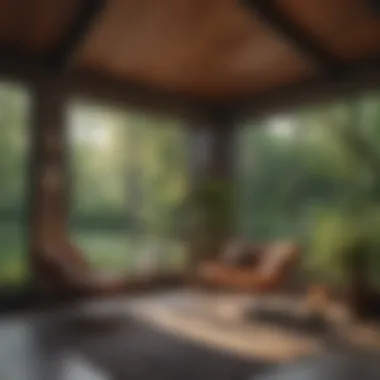
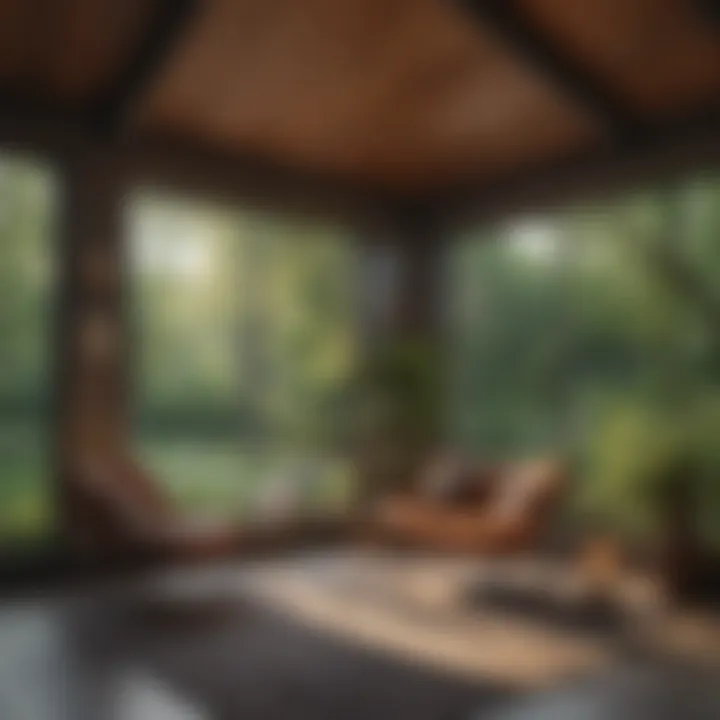
Creating Inviting Spaces
Creating inviting spaces is an art form in itself. A room should feel welcoming to anyone who enters, evoking a sense of comfort and acceptance. This can be achieved by focusing on spatial arrangements and personal touches. Here are a few tips to consider:
- Mix and Match Textures: Incorporating different materials like soft throws, wooden furniture, and metal accents can add depth and interest.
- Personal Decorative Items: Family photos, travel souvenirs, or unique art pieces can make a space speak to your personality.
- Strategic Lighting: Soft and warm lighting can change the entire vibe of a room. Consider using floor lamps, candles, or string lights to create layers and warmth.
- Natural Elements: Introduce plants or natural wooden items. They not only beautify the space but also promote a connection to nature, a key concept in hygge.
"Creating a home is about more than making it pretty; it’s about making it feel like you."
In summary, implementing hygge in interior design is not just about decor but crafting an environment that nurtures relationships and self-reflection. As we select furniture, choose color palettes, and create inviting spaces, we breathe life into our homes, inviting not just comfort but a sense of belonging.
Hygge and Seasonal Adaptation
Hygge isn’t just a static concept; it flexes and molds itself to the rhythm of the seasons. Each part of the year brings unique sensory elements that can enhance the experience of coziness and warmth in our lives. The changing seasons offer different opportunities to embrace hygge, not just in the home environment but also in our daily activities and social interactions. Recognizing how to adapt hygge through these seasonal shifts can deepen our connection to the world around us and foster a more enriching lifestyle.
Reflecting the Seasons in Design
Designing your space with the seasons in mind can turn a home into a haven. As winter blankets the world in white, warm textiles made of wool and flannel can create an inviting atmosphere. Heavy curtains and rugs add layers of warmth both literally and figuratively. Think about placing a thick throw over your sofa; it not only serves as a practical addition but also as a visual cue of comfort.
When spring emerges, lighter fabrics and pastel color schemes replace heavy items, inviting in the freshness that comes with blooming flowers. Use airy curtains to let the light in and place houseplants around the living area to breathe life into the space. In summer, outdoor spaces can flourish through mindful decorating—string lights draped around a patio can create a cozy vibe for al fresco dining.
Autumn, with its rich hues, allows for integrating deep oranges, browns, and reds not just through decor, but also through seasonal foods and drinks. Picture a table set with a rustic touch, perhaps a wooden board with various cheeses and warm drinks, inviting friends to gather and savor.
"A home is not just a place; it is an emotional refuge, a breath of fresh air, an oasis tailored to the ebb and flow of life’s seasons."
Seasonal Activities to Foster Hygge
Engaging in activities during different seasons can amplify the feeling of hygge and appreciation for life’s simpler pleasures.
- Winter Activities: As the days grow shorter, embrace the cold by indulging in winter sports like skiing or ice skating. Gather around a fire pit with friends wrapped in blankets, sharing stories and hot cocoa to keep spirits lifted.
- Spring Activities: This season invites rejuvenation. Organize a garden party with friends. Planting flowers together enlivens the spirit, while homemade lemonade brings a refreshing touch. Nature walks can be a soothing experience to appreciate the new blooms.
- Summer Activities: Take advantage of long evenings with sunset picnics in the park. Join local farmers' markets and savor the bounty of summer fruits; sometimes the juiciest strawberries become the best part of the day.
- Autumn Activities: Celebrate fall by hosting a cozy gathering featuring pumpkin-flavored treats. An afternoon spent with candles lit and the scent of spices filling the air can evoke heightened sensations of coziness.
By embracing seasonal activities, one can cultivate a richer tapestry of hygge within their life, where each season offers moments of reflection, connection, and fulfillment. In doing so, you foster not just an environment of comfort in your home, but also a lifestyle that celebrates the beauty of each passing season, enhancing your everyday joy.
Hygge Beyond the Home
Hygge isn't just a concept that confines itself within the walls of your living room. It extends, like a warm embrace, into the wider world, encouraging connections and experiences that foster comfort and joy in various environments. The importance of understanding hygge beyond the home lies in recognizing that it creates a fuller, richer life. Whether through community interactions or social celebrations, hygge nurtures an atmosphere of togetherness, making life feel content and meaningful. This section explores how embracing the principles of hygge in broader contexts can enhance your lifestyle and promote a sense of belonging.
Building Community Connections
Creating hygge within a community can have profound benefits. It’s about weaving threads of comfort into the fabric of social life. When people come together, a shared atmosphere of warmth and support can sprout. Maybe it’s through local neighborhood dinners or outdoor movie nights in the park, where everyone brings a dish to share.
- Fostering Trust: When you engage in community activities that emphasize hygge, trust develops. This trust builds a stronger network where people look out for one another.
- Creating Shared Experiences: Shared experiences, like potlucks and community clean-ups, enhance bonds. They provide memories that linger, just like the delicious aroma from a pot of stew simmering on the stove.
- Inclusivity: This cozy mindset fosters an inclusive environment. It allows diverse groups to connect over shared interests, hobbies, or simply the love for good food and good company.
By centering hygge in community life, you promote a nurturing space that welcomes everyone, breaking down walls of isolation.
Hygge in Social Gatherings
Social gatherings infused with hygge create an atmosphere that encourages connection and relaxation, where conversations flow easily, and laughter abounds. Imagine a cozy evening with friends where the space is filled with soft lighting, good food, and inviting textures.
Here are some ways to cultivate hygge in your gatherings:
- Simplicity is Key: Keep the gatherings simple. Instead of fancy settings, focus on what truly matters—connection. A few friends around a table with homemade pizza can feel just as special as a multi-course meal.
- Enhancing Ambiance: Use candles or string lights to craft a warm atmosphere. Lighting plays a crucial role in setting the right tone and making everyone feel at ease.
- Engaging Activities: Incorporate activities that bring people together without forcing them into uncomfortable situations. Think board games, storytelling, or even cooking together.
"The magic of hygge lies in its ease; it can be as simple as enjoying a quiet tea with a friend, feeling at home wherever you are."
- Comfortable Setting: Arrange seating that encourages closeness. A circle or semi-circle invites open discussion and interaction, fostering deeper connections.
By incorporating hygge into social gatherings, you transform ordinary moments into memorable experiences that feed the soul and strengthen friendship.
Embracing hygge beyond the home allows individuals to maintain a sense of warmth and community. It plays a vital role in creating a network where people feel valued and cared for, enriching lives with warmth, joy, and togetherness in every context.
Experiencing Hygge in Daily Life
When one thinks of hygge, the imagery that often pops into the mind involves cozy blankets, warm drinks, and dim lights. Yet, experiencing hygge goes beyond aesthetic choices; it resonates deeply within our daily routines and interactions. Essentially, hygge encourages individuals to pause from the hustle and bustle of modern life, pushing aside stresses and distractions.
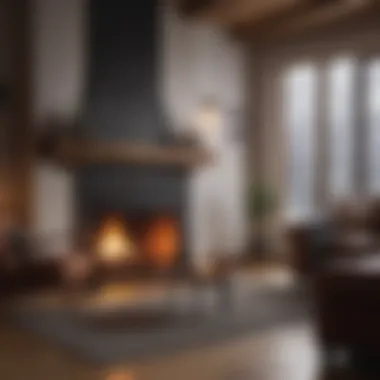
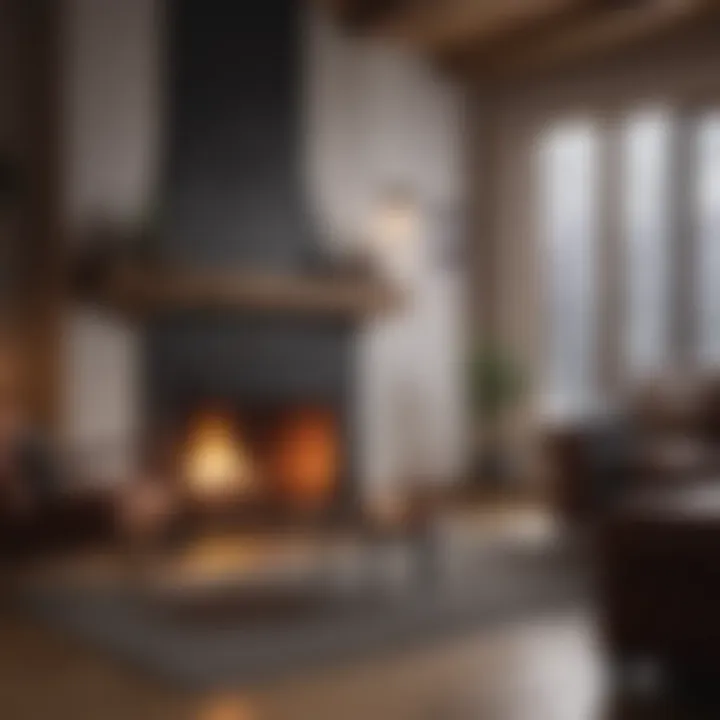
Practicing hygge in daily life can lead to numerous benefits. For starters, it fosters a sense of mindfulness. By focusing on the present, individuals can appreciate the small moments that collectively bring joy. Moreover, hygge cultivates deeper connections among family and friends. In a world where digital distractions often overshadow face-to-face interactions, embracing hygge leads to more meaningful social ties.
"Hygge is not just about enjoying life's comforts; it’s about creating a space where love and togetherness flourish."
Mindfulness Practices
One of the cornerstones of hygge is the emphasis on mindfulness practices. Mindfulness is more than just a buzzword; it’s about being aware of the here and now. It invites you to turn your attention inward and appreciate what surrounds you.
To incorporate mindfulness into your daily life, consider setting aside specific times for quiet reflection. Whether it’s a few minutes in the morning with a cup of tea or a peaceful moment before bed, these rituals invite calm and introspection.
Additionally, activities such as journaling or going for a nature walk can foster an appreciation for your environment. Here are some suggestions:
- Breathe deeply: Take a few minutes to focus solely on your breath. Notice the rhythm and let go of tension.
- Engage the senses: Choose an object—be it a candle or a favorite book—and fully engage your senses with it. What do you see, hear, and feel?
- Mindful eating: Savor your food without distractions. Pay attention to each bite; this not only makes meals more enjoyable but also promotes health.
Simple Pleasures that Exude Hygge
Ultimately, the essence of hygge lies in embracing simple pleasures that color everyday life with warmth and contentment. It invites us to recognize beauty in mundanity. Perhaps it’s as straightforward as indulging in a slice of cake while watching the rain outside or sharing hearty conversations with loved ones over good food.
Here are a few ways to highlight those simple pleasures:
- Create a cozy nook: Carve out a space in your home that feels inviting, be it with cushions, warm lighting, or your favorite books. This becomes your sanctuary for retreating into moments of tranquility.
- Celebrate small moments: Whether it’s a rainy afternoon or the first bloom of spring, acknowledge these small shifts with gratitude.
- Host casual gatherings: Embrace the joy of hosting friends with simple, potluck-style meals. No need for elaborate preparations; the focus is on togetherness.
Experiencing hygge in daily life encourages a lifestyle that is not only fulfilling but also deeply enriching. As individuals weave these threads of comfort, connection, and mindfulness into their routines, they discover that the true essence of hygge isn’t just found in a cozy corner, but in each shared laugh and every attentive moment.
Challenges in Embracing Hygge
In diving into the realm of hygge, one might think it’s all about cozy blankets and warm cups of tea. Yet, while it seems simple, there are notable challenges that can crop up when trying to fully embrace this lifestyle. Understanding these hurdles isn’t just about self-awareness; it's crucial when one aims to integrate this philosophy into everyday life. By navigating the potential pitfalls, a more enriching experience can truly unfold.
Cultural Misinterpretations
The world loves to adopt concepts from other cultures, and hygge is no exception. However, with this admiration comes a risk of misunderstanding. Many outside Denmark may perceive hygge as merely a trend or aesthetic—think candles, soft furnishings, and perhaps a dash of seasonal decor. But hygge goes much deeper than that. It’s rooted in the nuances of Danish culture, reflecting values like togetherness, simplicity, and gratitude.
This misinterpretation can lead to a superficial approach. For instance, one might invest in all the right decor without embracing the underlying emotions hygge embodies—like connection and presence.
Additionally, the global marketplace is filled with products tagged as "hygge-inspired," aiming to capture a bit of that cozy essence. This commodification can dilute the authentic experience, making it seem more about consumption than meaningful interactions.
Culturally, it’s vital to recognize that hygge thrives on shared moments and everyday pleasures. Only when people grasp these deeper meanings can they truly start to adopt the philosophy into their own lives.
Balancing Minimalism and Comfort
Living simply is often championed in today’s fast-paced world. Minimalism encourages reducing clutter and distraction, which can indeed create space for hygge. Yet, striking a balance between minimalism and comfort presents its own set of challenges. You may find yourself in a tug-of-war between the desire for a serene, uncluttered space and the warmth brought about by cozy, inviting decor.
Consider this: a room stripped of any personal touch may feel spacious but could lack the warmth that hygge emphasizes. Comfort, after all, is an emotional response and can’t be achieved through minimalism alone. It’s about creating an environment that feels lived in yet still peaceful.
Here are a few strategies to find that balance:
- Select a few key pieces: Choose a small number of items that bring joy or comfort. These can be snuggly throws or cherished photographs which add personality without overwhelming the space.
- Mindful placement: Consider how you arrange furniture and decor. Cozy arrangements can make spaces feel inviting, even if they adhere to minimalist principles.
- Layering textures: Incorporating a variety of textures, such as soft rugs, plush cushions, or wooden surfaces, can introduce a sense of warmth while still maintaining simplicity.
Finding the sweet spot between embracing minimalism and fostering a cozy atmosphere is not a straightforward path. Still, by being mindful of one's environment, you can cultivate a space where hygge can flourish without conflicting with simpler living philosophies.
Future Perspectives on Hygge
Hygge is not just a passing trend; it evolves alongside our changing lifestyles and societal needs. As we navigate a world that continually shifts, it's essential to understand how the principles of hygge can adapt. The idea of cozy living has gained traction across various cultures, particularly while people seek refuge in comfort amid chaos. This section focuses on the importance of looking ahead, discussing evolving trends and the global resonance of hygge, opening avenues for deeper connections through shared experiences.
Evolving Trends in Design and Lifestyle
In recent years, there’s been a noticeable shift in how people perceive their living spaces. Many are swapping stark minimalism for a soft, cozy aesthetic grounded in hygge principles. This trend is not merely a home decor style; it resonates within broader lifestyle changes.
- Sustainability: Individuals increasingly favor eco-friendly materials and ethically sourced furnishings. Integrating these practices with hygge enhances the sense of comfort and purpose in one’s living environment.
- Personalization: Homeowners are moving away from cookie-cutter designs. Instead, they’re embracing unique, meaningful decor that reflects their experiences and stories. This personalized touch amplifies the ‘cozy’ feeling, making spaces truly their own.
- Tech Integration: As technology becomes more prevalent, smart gadgets are being incorporated into our daily rituals. For example, smart lighting that mimics natural light cycles contributes to creating an ambient atmosphere conducive to relaxation, weaving together comfort and modern convenience.
Changing consumer behaviors are a testimony to the importance of hygge in contemporary lifestyles. People yearn to cultivate a sense of belonging and tranquility amid external turmoil, making hygge an appealing choice.
Hygge in the Global Context
Hygge hasn't confined itself to its Danish roots; it’s blossoming on a global scale. Different cultures are adopting and adapting its principles, each incorporating local nuances into their interpretations of cozy living. That cultural blend offers a rich tapestry of experiences.
- North American Adaptation: In the U.S. and Canada, hygge has evolved into a lifestyle that often incorporates social gatherings and a strong emphasis on community ties. Think warm gatherings around bonfires or cozy coffee shops on chilly afternoons.
- Asian Influence: In countries such as Japan, the essence of hygge aligns with concepts like wabi-sabi, which appreciates imperfection and the beauty of natural elements. This integral connection reflects on how spaces are designed, celebrating simplicity and tranquility.
- Global Retail: Stores now carry dedicated hygge collections, showcasing products that promise coziness, from plush blankets to scented candles. This retail embrace suggests how widespread the influence of hygge has become, creating a universal language of warmth.
"Hygge serves as a reminder that genuine comfort can be found in both the mundane and extraordinary moments of life."
As we step into an increasingly interconnected world, the idea of hygge becomes a nexus where cultures learn from one another, nurturing a collective aspiration for warmth, connection, and tranquility. In this ever-evolving landscape, hygge symbolizes a timeless pursuit of comfort, one that continues to shape our interactions with the spaces and people around us.



